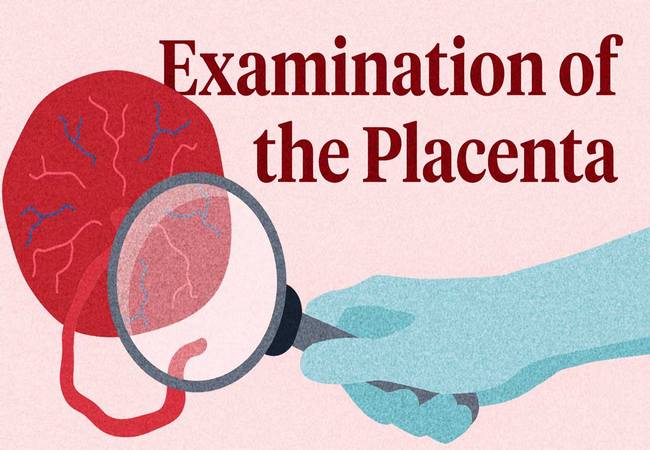What is Placenta Examination?
Pathological examination of the placenta is performed for fetal, maternal, and placental indications. The purposes are to identify fetal or maternal disease, to provide prognosis for the current and future pregnancies, to evaluate the effect of maternal disease on the pregnancy, and for legal considerations.

Importance of Placenta Examination:
It is necessary to examine the placenta in two conditions at least: when the fetus is still born or dies in the neonatal period, and when there is a gestational or a neonatal pathology. Placental examination is essentially macroscopic.
1. It is recommended to practice it on fresh placenta, so that cytobacteriological investigation can be done.
2. Complete pathologic evaluation of the placenta provides valuable information for perinatal care for the obstetrician, neonatologist, pediatrician, and family.
3. The principal abnormalities or lesions are described, with their clinical significance: shape abnormalities, pathology of the cord and membranes, vascular lesions (decidual haematoma, infarcts, perivillous fibrin deposition), chorioangioma, abscess.
4. Some more “genetical” aspects of the placentology are also approached, for instance chromosomal aberrations, or multiple pregnancies.
5. Placenta examination is essential for determine:
- Stillbirth (antepartum or intrapartum); if baby is not going for a post mortem,
- Late miscarriage,
- Severe fetal distress requiring admission to NNU,
- Prematurity (less than 30 weeks gestation),
- Intrauterine growth,
- Maternal pyrexia (>38°C).
6. Referral of placenta for examination may be desirable for identifying:
- Prematurity (3036 weeks),
- Placental abruption,
- Fetal congenital malformation,
- Morbidly adherent placenta,
- Twins or other multiple pregnancy (uncomplicated),
- Abnormal placental shape (if clinically relevant),
- Two vessel cord, etc.
- Prolonged rupture of the membranes (more than 36 hours),
- Gestational diabetes,
- Maternal group B streptococcus,
- Pre-eclampsia/maternal hypertension,
- Matermal coagulopathy,
- Maternal substance abuse.
How to Perform Placenta Examination?
Placenta examination can be done by the below ways:
- Explain the procedure to the parents and ask if they want to observe.
- Wash hands; wear an apron and gloves.
- The delivery trolley is a good surface to use.
- Lay out the placenta with the fetal surface uppermost – noting shape, size, color and smell.
- The cord is then examined noting the length, the point of insertion and the presence of any knots.
- Count the vessels in the cut end of the cord: the absence of one of the arteries can be associated with renal agenesis.
- Observe the fetal surface for irregularities.
- By lifting the cord and holding the placenta up, you can then observe the membranes and inspect for completeness. There should be a single hole present.
- The placenta is returned to the surface and the membranes are spread out in order to look for extra vessels, lobes, or holes in the surface.
- The amnion is then pulled back towards the cord, thereby separating the membranes to ensure that they are both present.
- The placenta is turned over to inspect the maternal side.
- The cotyledons are examined to ensure that they are all present, noting any areas of infarction or blood clots.
- Estimate blood loss.
- Take cord blood samples.
- Weigh or swab the placenta if indicated.
- Dispose of the placenta as per trust guidelines.
- Clean away equipment.
- Wash hands.
- Discuss the findings with the parents.











